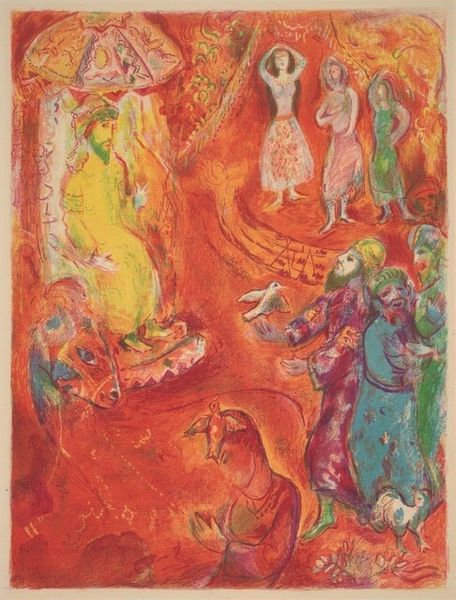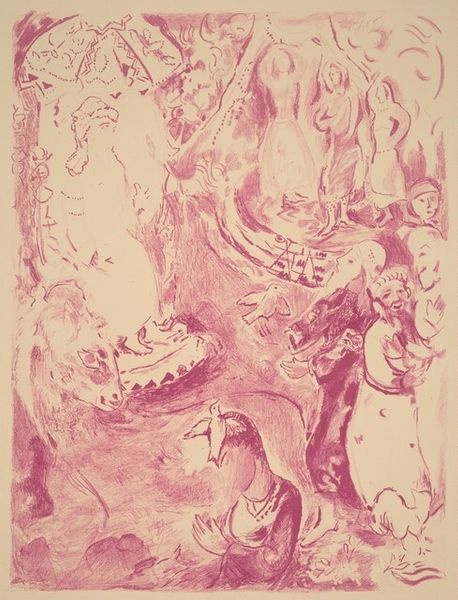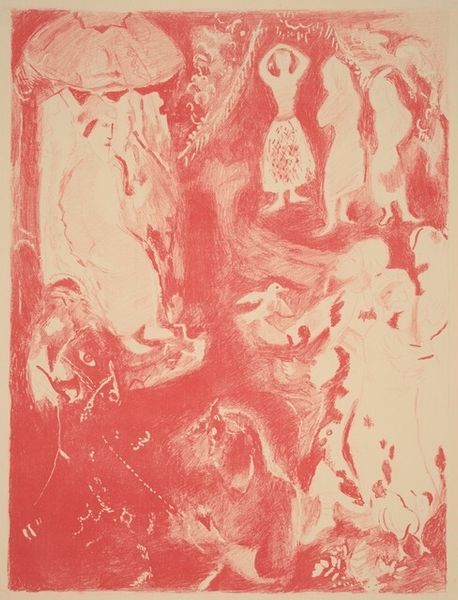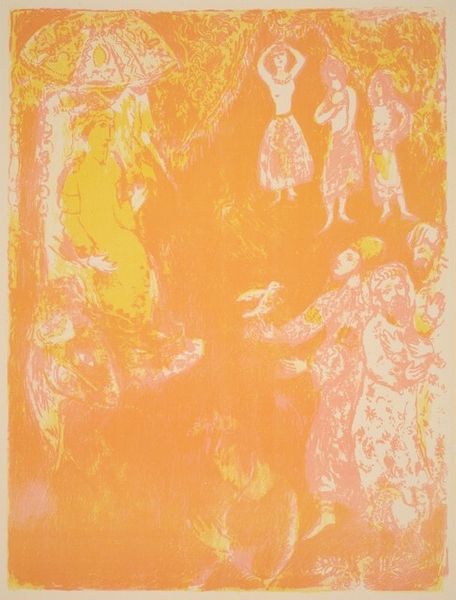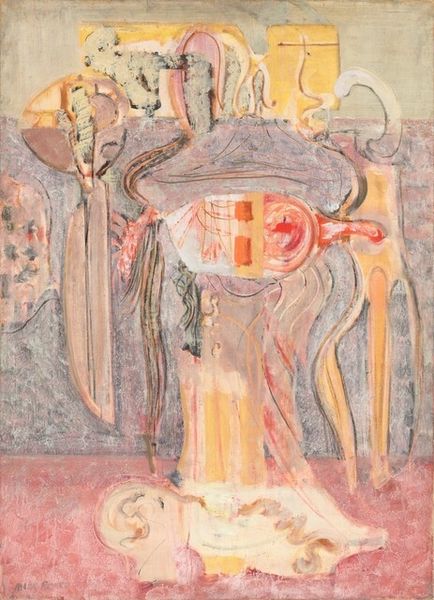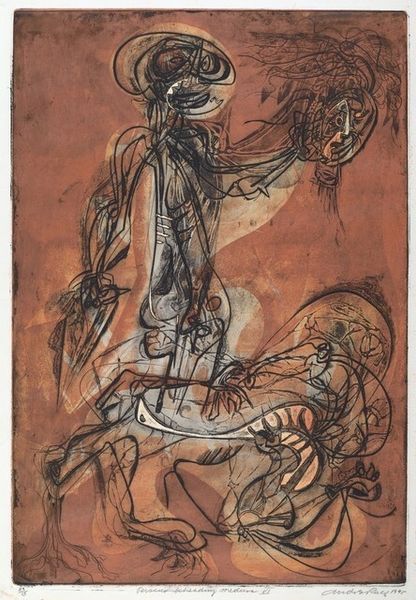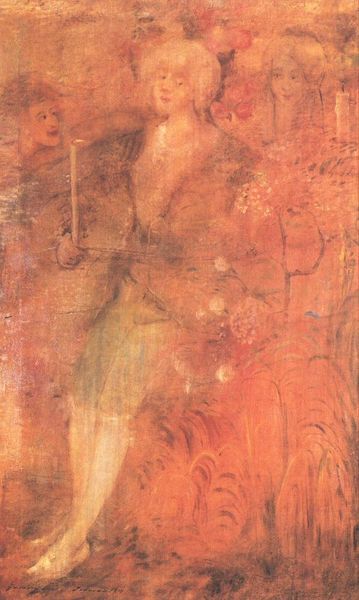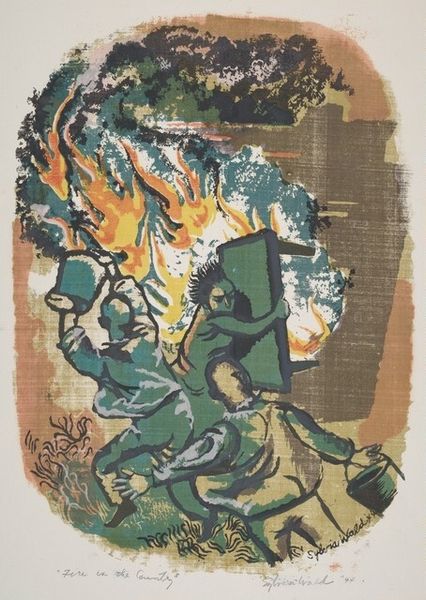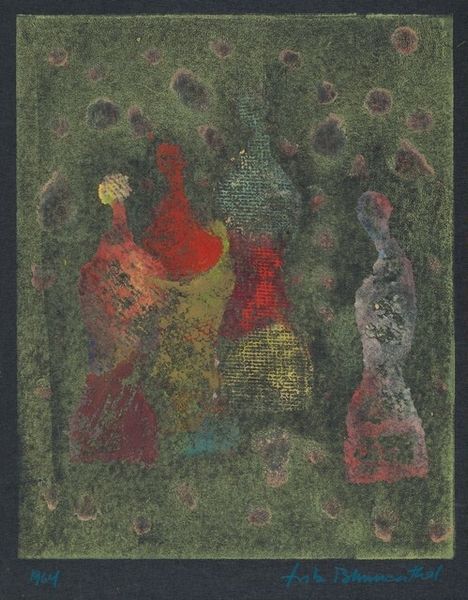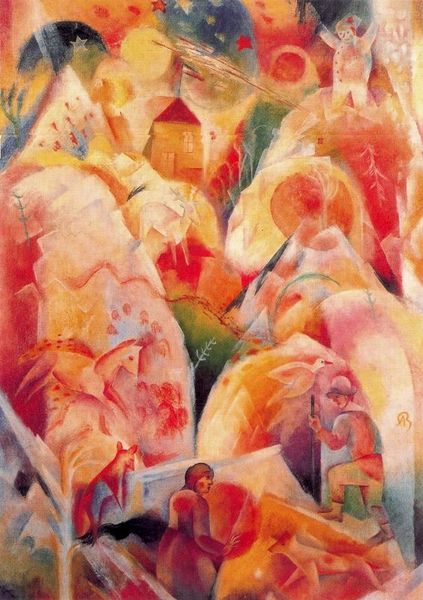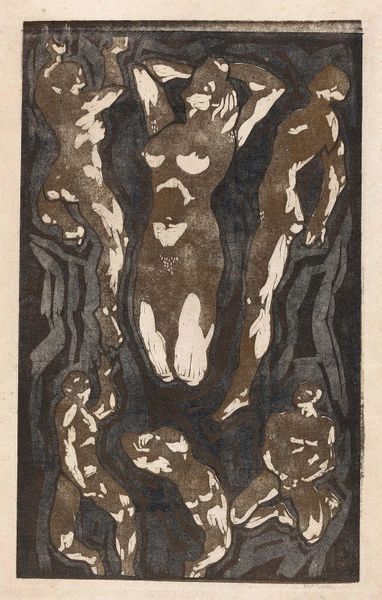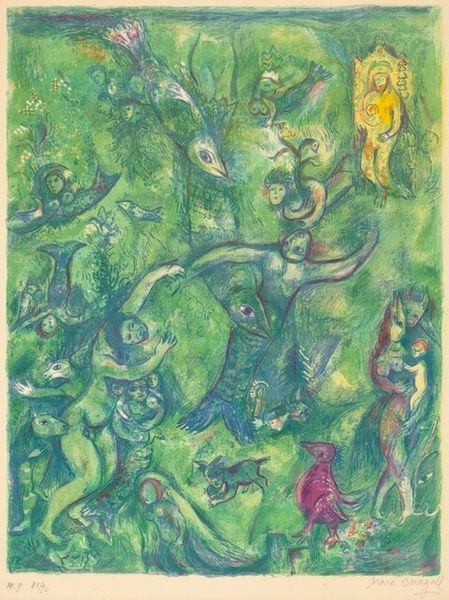
lithograph, print, paper
#
narrative-art
#
lithograph
# print
#
figuration
#
paper
#
watercolour illustration
#
surrealism
#
modernism
Copyright: National Gallery of Art: CC0 1.0
Curator: Here we have Marc Chagall's lithograph, "The Tale of the Ebony Horse," completed between 1945 and 1946. Editor: What immediately strikes me is the pervasive warmth of the hues, verging on monochrome. It imbues the scene with a dreamlike, almost hallucinatory quality. Curator: Precisely. Chagall’s rendering embodies features from surrealism and modernism. It’s part of a broader engagement with folklore and narrative traditions throughout his career. This work likely comes on the heels of World War II. Editor: The figuration is fascinating. Consider the central figure aloft on what I presume is the Ebony Horse itself, radiating a luminescence set against the russet tones that permeate the composition. And then the gaze of other figures, seemingly in supplication. It raises several questions about the power dynamic displayed in the image. Curator: Note the symbolic use of the birds—they appear quite frequently in his artistic vocabulary. They are symbols of peace. But you also have allusions to theatre; it evokes the rich tapestry of Eastern storytelling traditions during a time when such stories were used to find hope during such atrocities of World War II. Editor: You're right. The strategic employment of linear elements amidst those planes of colour functions is worth appreciating. This print invites speculation about narrative and symbolic connections, wouldn't you agree? Curator: Undoubtedly, a potent combination, characteristic of Chagall’s deeply subjective yet universally resonant oeuvre. It is a beautiful encapsulation of Chagall's dedication to bridging the gaps between his personal history, cultural legacy, and contemporary society. Editor: The more I reflect on this piece, the more I realize it’s that contrast—between individual figures, larger groupings, and dream versus reality—that is the core of the artwork's tension and its emotional power. Curator: An astute observation, precisely because its capacity to convey the intersectionality of human hopes and historical realities is powerful to contemplate.
Comments
No comments
Be the first to comment and join the conversation on the ultimate creative platform.
